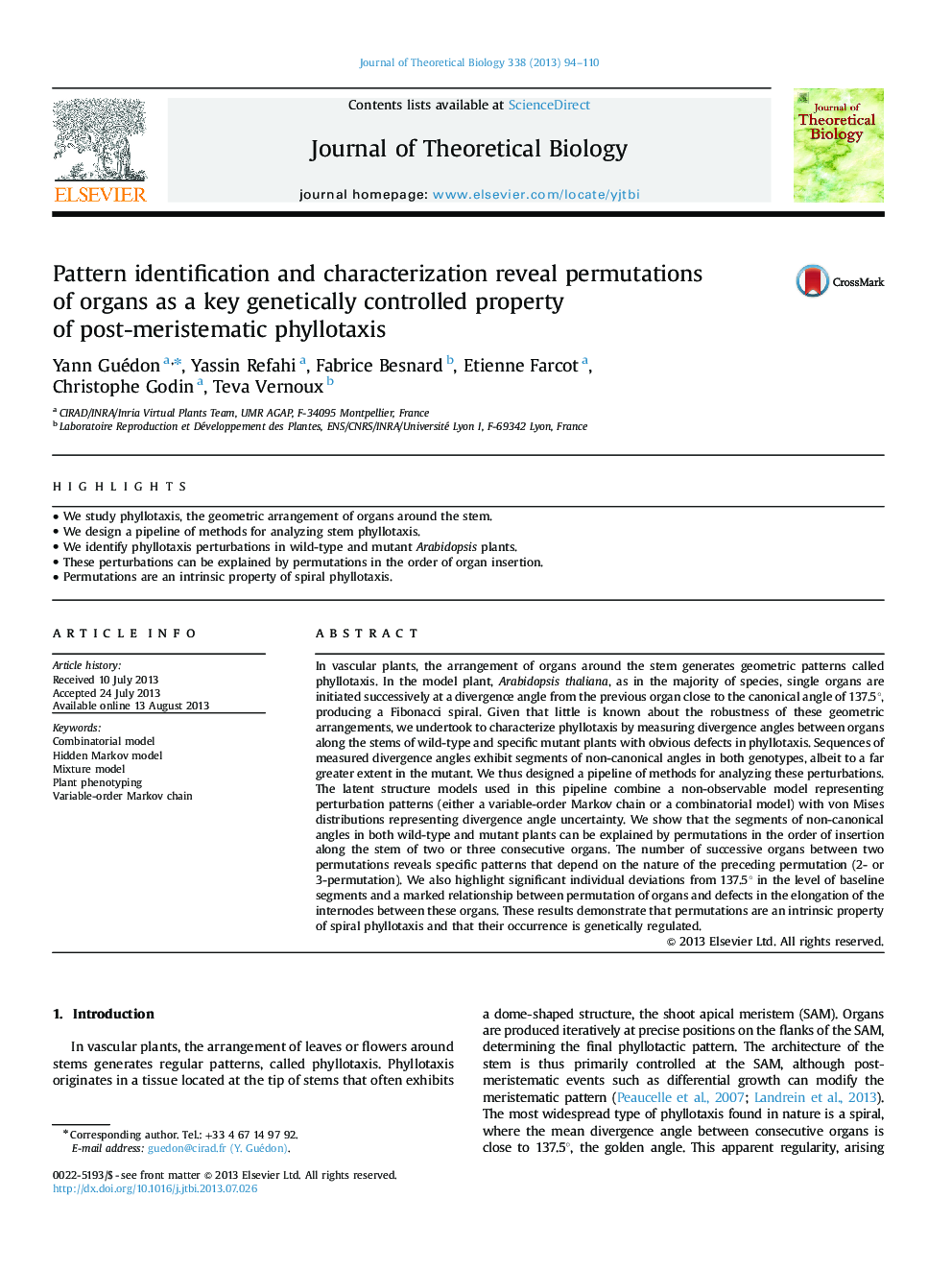| Article ID | Journal | Published Year | Pages | File Type |
|---|---|---|---|---|
| 4496321 | Journal of Theoretical Biology | 2013 | 17 Pages |
•We study phyllotaxis, the geometric arrangement of organs around the stem.•We design a pipeline of methods for analyzing stem phyllotaxis.•We identify phyllotaxis perturbations in wild-type and mutant Arabidopsis plants.•These perturbations can be explained by permutations in the order of organ insertion.•Permutations are an intrinsic property of spiral phyllotaxis.
In vascular plants, the arrangement of organs around the stem generates geometric patterns called phyllotaxis. In the model plant, Arabidopsis thaliana, as in the majority of species, single organs are initiated successively at a divergence angle from the previous organ close to the canonical angle of 137.5°, producing a Fibonacci spiral. Given that little is known about the robustness of these geometric arrangements, we undertook to characterize phyllotaxis by measuring divergence angles between organs along the stems of wild-type and specific mutant plants with obvious defects in phyllotaxis. Sequences of measured divergence angles exhibit segments of non-canonical angles in both genotypes, albeit to a far greater extent in the mutant. We thus designed a pipeline of methods for analyzing these perturbations. The latent structure models used in this pipeline combine a non-observable model representing perturbation patterns (either a variable-order Markov chain or a combinatorial model) with von Mises distributions representing divergence angle uncertainty. We show that the segments of non-canonical angles in both wild-type and mutant plants can be explained by permutations in the order of insertion along the stem of two or three consecutive organs. The number of successive organs between two permutations reveals specific patterns that depend on the nature of the preceding permutation (2- or 3-permutation). We also highlight significant individual deviations from 137.5° in the level of baseline segments and a marked relationship between permutation of organs and defects in the elongation of the internodes between these organs. These results demonstrate that permutations are an intrinsic property of spiral phyllotaxis and that their occurrence is genetically regulated.
